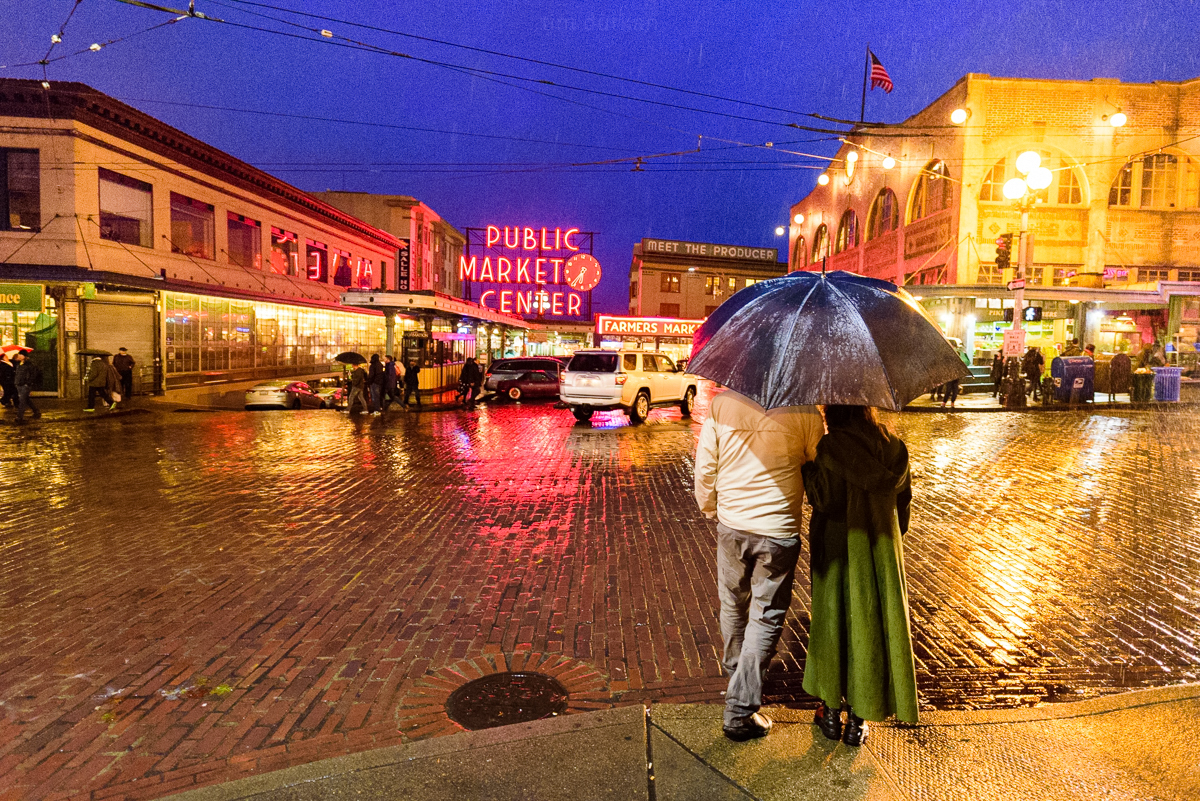 In Seattle’s Capitol Hill neighborhood, there’s a sidewalk that teaches you how to dance. If you see folks waltzing on Broadway, they’re probably dancing to artist Jack Mackie’s Dancers’ Series: Steps (1982) — eight sets of inlaid-bronze shoeprints in the pattern of a couple’s dancing feet. The shoeprints are “step‑by‑step” movements from the tango, waltz, lindy, foxtrot weave, rumba and mambo, as well as two dances created by Mackie himself, the “busstop” and the “obeebo.” Inlaid bronze arrows and “R” and “L” (right and left) labels on the feet indicate the dance’s proper foot movements. A plaque beside each set of dance steps gives the name and rhythm of the dance. For example, the tango is “slow, slow, quick, quick, slow,” while the rumba is “quick, quick, slow.”
In Seattle’s Capitol Hill neighborhood, there’s a sidewalk that teaches you how to dance. If you see folks waltzing on Broadway, they’re probably dancing to artist Jack Mackie’s Dancers’ Series: Steps (1982) — eight sets of inlaid-bronze shoeprints in the pattern of a couple’s dancing feet. The shoeprints are “step‑by‑step” movements from the tango, waltz, lindy, foxtrot weave, rumba and mambo, as well as two dances created by Mackie himself, the “busstop” and the “obeebo.” Inlaid bronze arrows and “R” and “L” (right and left) labels on the feet indicate the dance’s proper foot movements. A plaque beside each set of dance steps gives the name and rhythm of the dance. For example, the tango is “slow, slow, quick, quick, slow,” while the rumba is “quick, quick, slow.”
Dancers’ Series is at eight locations in the neighborhood’s busy shopping and entertainment district. Mackie stated, “These dance steps came by concentrating on the people and what they do. They wouldn’t have worked anywhere else in the city.”
For the project, Mackie participated on a design team that included architects, engineers, city officials and local merchants. The team developed a renovation plan for the retail portion of Broadway, with street and sidewalk improvements, lighting, landscaping and artwork. According to Mackie, the idea for the artwork was a direct outgrowth of his work with design team members. The artist selected the sites for his artwork along Broadway, and also the particular dance step appropriate for each site.
The project was funded by Seattle Engineering Department (now Seattle Department of Transportation) 1% for Art funds and private businesses in the Broadway Local Improvement District.
IMAGE: Jack Mackie with Charles “Chuck” Greening (bronze casting), Dancers’ Series: Steps, bronze with iron subframe, each dance‑step series uses approximately 12 square feet. Located at eight locations along Broadway in Capitol Hill.
-Tamara Gill, Community Development & Outreach
![ArtsCulture_40yrs_Med[BlackBlue]](http://artbeat.seattlemulti.wpengine.com//wp-content/uploads/sites/32/2013/04/ArtsCulture_40yrs_MedBlackBlue-300x116.jpg) Weekly Art Hit is featuring artworks every week from the ’70s, ’80s, ’90s and 2000s. to celebrate the 40th anniversary of the city’s public art program.
Weekly Art Hit is featuring artworks every week from the ’70s, ’80s, ’90s and 2000s. to celebrate the 40th anniversary of the city’s public art program.


